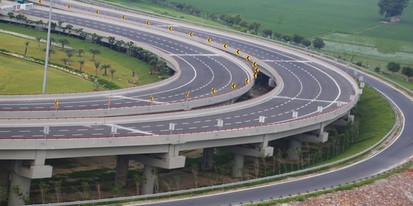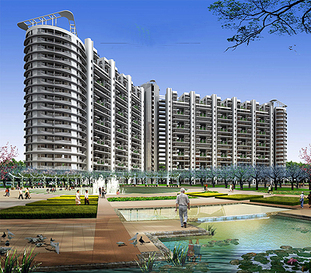 Yamuna Expressway Begins from Greater Noida
Yamuna Expressway Begins from Greater Noida With the increase in the influx of people from the rural area to the urban areas the urban population also has increased. With this increase the flow of traffic on roads also is on the rise. This calls for better infrastructure and roads for accommodating all such increase. Yamuna expressway opening was a venture in this direction. There were many objectives in front of the government in question in laying the expressway and most of them are seen to be fulfilled. It was inaugurated in the year 2012 August. Though it was done so two years behind its scheduled date its opening has brought a lot of relief for the road users. It begins from greater noida and culminates on the road toward Kanpur and Agra the NH 2.
One of the objectives was to provide a fast moving corridor for the movement of different kinds of traffic on the road. The main purpose of this was to reduce the travel time and to a large extent this has been achieved as the distance of travel between the said cities has reduced a lot. Another aim of taking up of the project was to connect the commercial centers on the east of Yamuna and the main townships and the development of all the adjoining areas here. The last but not the least purpose of the expressway project was to relieve the already congested NH 2 road which runs through densely populated cities like Faridabad, Palwal, Ballabgarh. This has helped the reduction of the pollution and carbon footprint caused by the vehicles passing between Agra and New Delhi.
Many more changes are seen and will be seen with the making of the expressway. The Yamuna expressway plots are a lot in demand and the real estate prices are on the rise. The individuals owning property can make good profit selling their property here. The property dealers charge double the amount of Yamuna expressway plots premium as the prices of the land has doubled and in some places tripled too. Increase in the demand of land both residential and commercial has brought about the real estate boom. There is a lot more of commercial activity in the Yamuna expressway area now than before. With the increase in such activities more and more development has taken place and will take place in the future too.
There is a lot of scope for the Yamuna expressway future development too. This kind of development calls for a lot of spending and there should be some source of income for this. One such source is the charging of toll at three points on the Yamuna expressway. The Yamuna expressway toll rates are different for different kinds of vehicles. The smaller vehicles like cars and jeeps than the larger and heavier vehicles like buses and trucks. The table of such toll rates is available at such points. Another benefit of the making of Yamuna expressway is that vehicle fuel mileage has improved and there is a reduction in their wear and tear too which will decrease the logistical cost too. All in all the making of Yamuna expressway has been beneficial in many ways to many people.
One of the objectives was to provide a fast moving corridor for the movement of different kinds of traffic on the road. The main purpose of this was to reduce the travel time and to a large extent this has been achieved as the distance of travel between the said cities has reduced a lot. Another aim of taking up of the project was to connect the commercial centers on the east of Yamuna and the main townships and the development of all the adjoining areas here. The last but not the least purpose of the expressway project was to relieve the already congested NH 2 road which runs through densely populated cities like Faridabad, Palwal, Ballabgarh. This has helped the reduction of the pollution and carbon footprint caused by the vehicles passing between Agra and New Delhi.
Many more changes are seen and will be seen with the making of the expressway. The Yamuna expressway plots are a lot in demand and the real estate prices are on the rise. The individuals owning property can make good profit selling their property here. The property dealers charge double the amount of Yamuna expressway plots premium as the prices of the land has doubled and in some places tripled too. Increase in the demand of land both residential and commercial has brought about the real estate boom. There is a lot more of commercial activity in the Yamuna expressway area now than before. With the increase in such activities more and more development has taken place and will take place in the future too.
There is a lot of scope for the Yamuna expressway future development too. This kind of development calls for a lot of spending and there should be some source of income for this. One such source is the charging of toll at three points on the Yamuna expressway. The Yamuna expressway toll rates are different for different kinds of vehicles. The smaller vehicles like cars and jeeps than the larger and heavier vehicles like buses and trucks. The table of such toll rates is available at such points. Another benefit of the making of Yamuna expressway is that vehicle fuel mileage has improved and there is a reduction in their wear and tear too which will decrease the logistical cost too. All in all the making of Yamuna expressway has been beneficial in many ways to many people.

 RSS Feed
RSS Feed